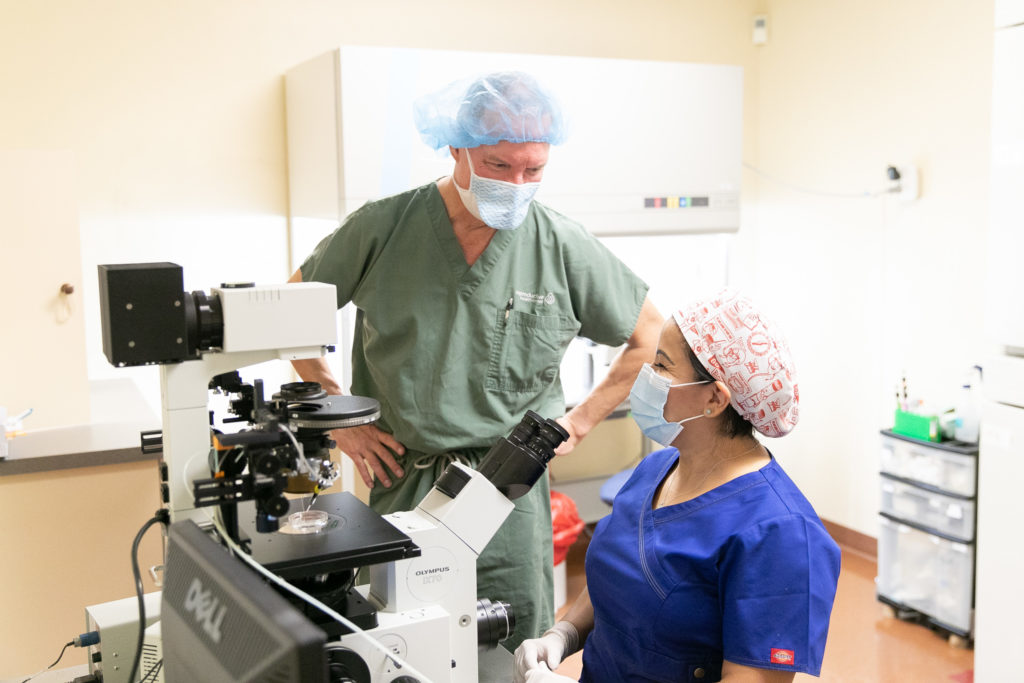 Intrauterine Insemination Process
Intrauterine Insemination Process
IUI is often the first procedure that infertility patients undergo, because it is less invasive and the cost is lower than in vitro fertilization (IVF). Pregnancy rates for this procedure vary between five percent and 20 percent per cycle attempt, depending on your age and your overall fertility diagnosis. For many couples, IUI will be the best first step, but depending on the results of your fertility testing, Dr. Hutchison might recommend a different treatment plan.
The procedure has two steps. First, the semen is prepared (if it’s donor sperm, it may come already prepared). Next, the sperm are transferred into the uterus.
Semen Preparation
Before the IUI procedure, the sperm are washed to make sure only the healthiest sperm are used for the procedure. Sperm washing separates sperm cells from the semen, getting rid of white blood cells, mucous, and seminal fluid that may interfere with fertility. It also eliminates dead or slow-moving sperm. If a man has poor sperm quality or a low sperm count, the sperm washing process can produce a higher concentration of only the healthiest sperm, ensuring the best chance at fertilization.
Sperm Transfer
After the sperm are washed, it’s time to perform the IUI procedure. The doctor passes a thin flexible tube through the woman’s cervix into her uterus. The sperm are then inserted through the tube directly into the uterine cavity. The procedure is simple (like having a pap smear), requires no anesthesia, and can be performed in a matter of minutes, right in our office in Tucson. We generally recommend that the woman remain lying down for 15 to 20 minutes afterwards, and then she can return to her normal daily activities.
After the IUI at our Scottsdale area fertility clinic, the woman can take a pregnancy test about two weeks later.

